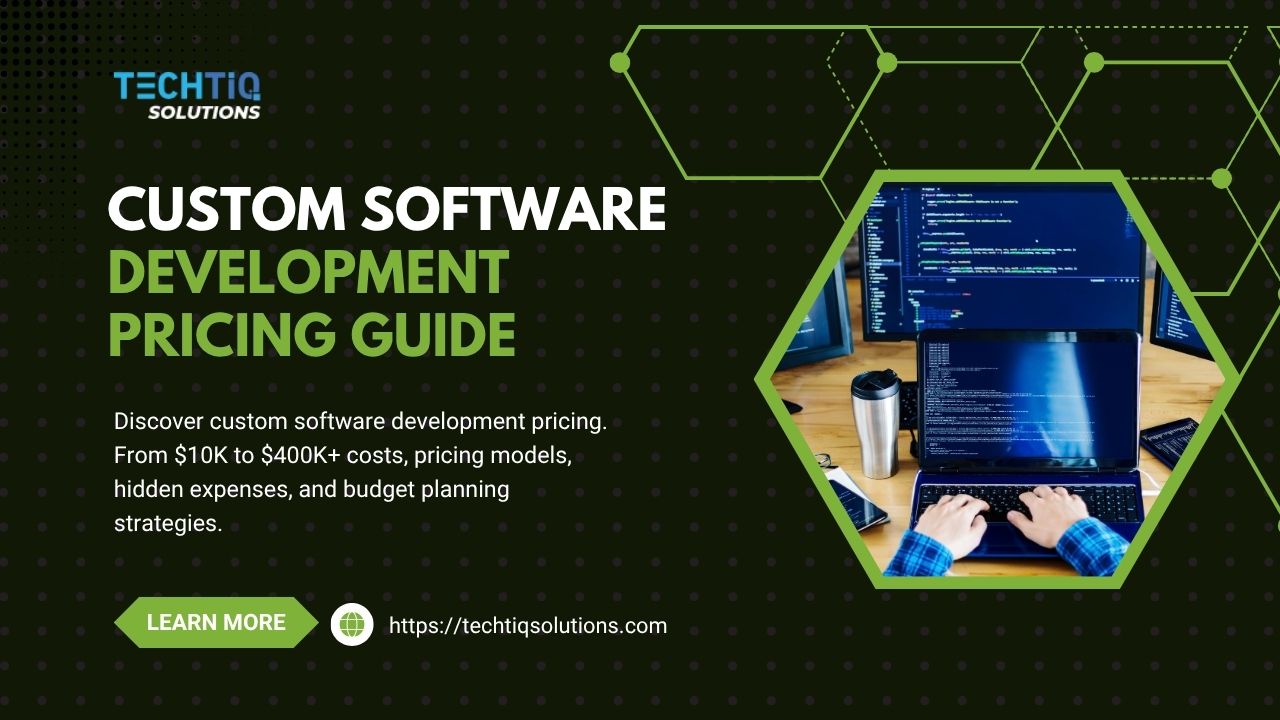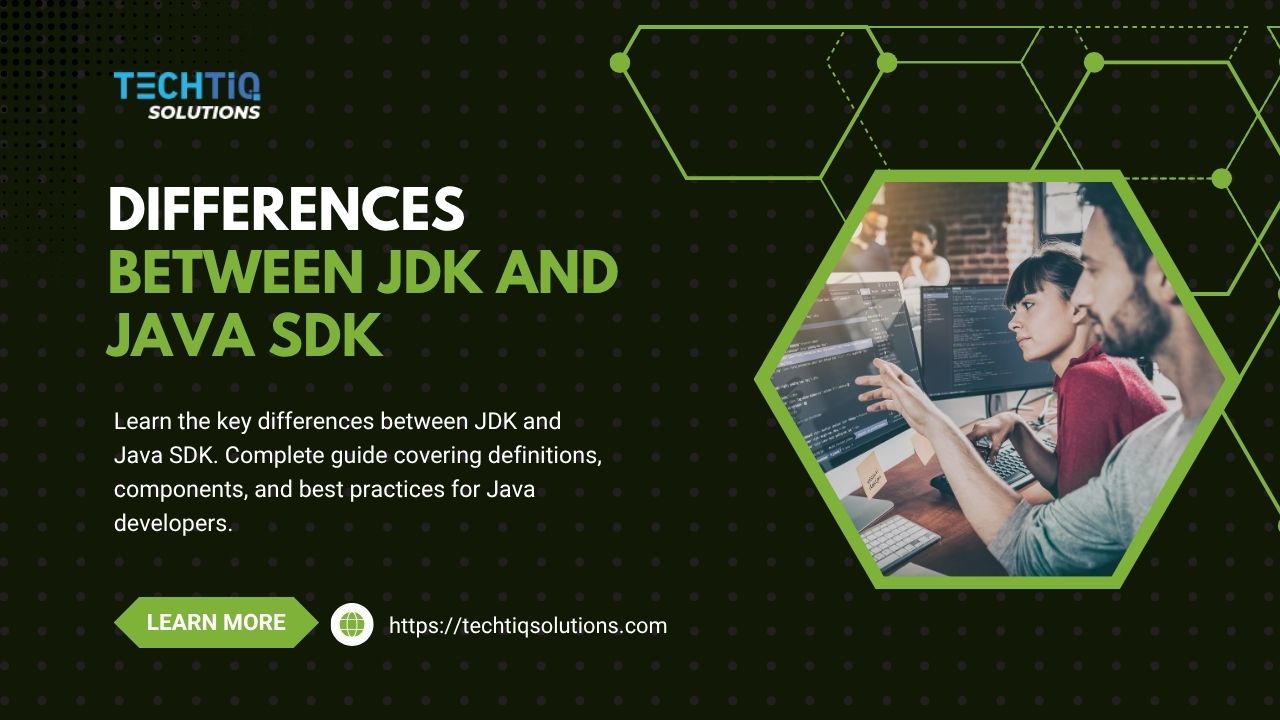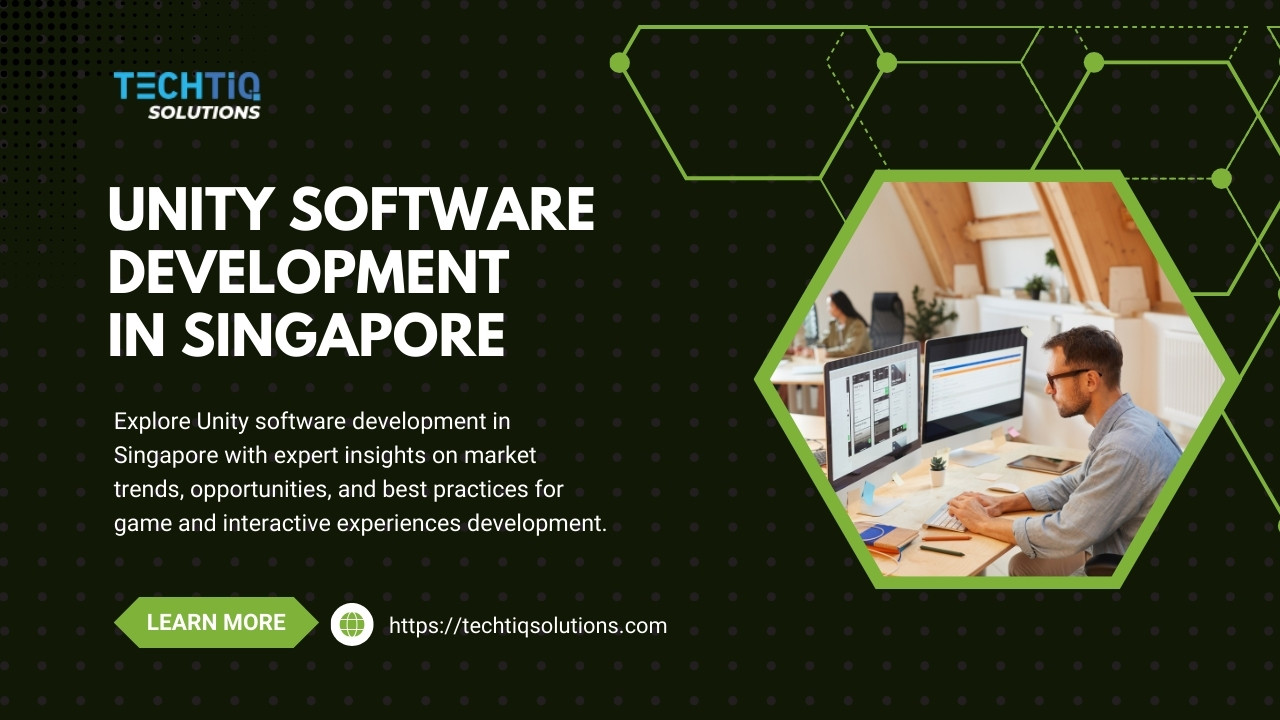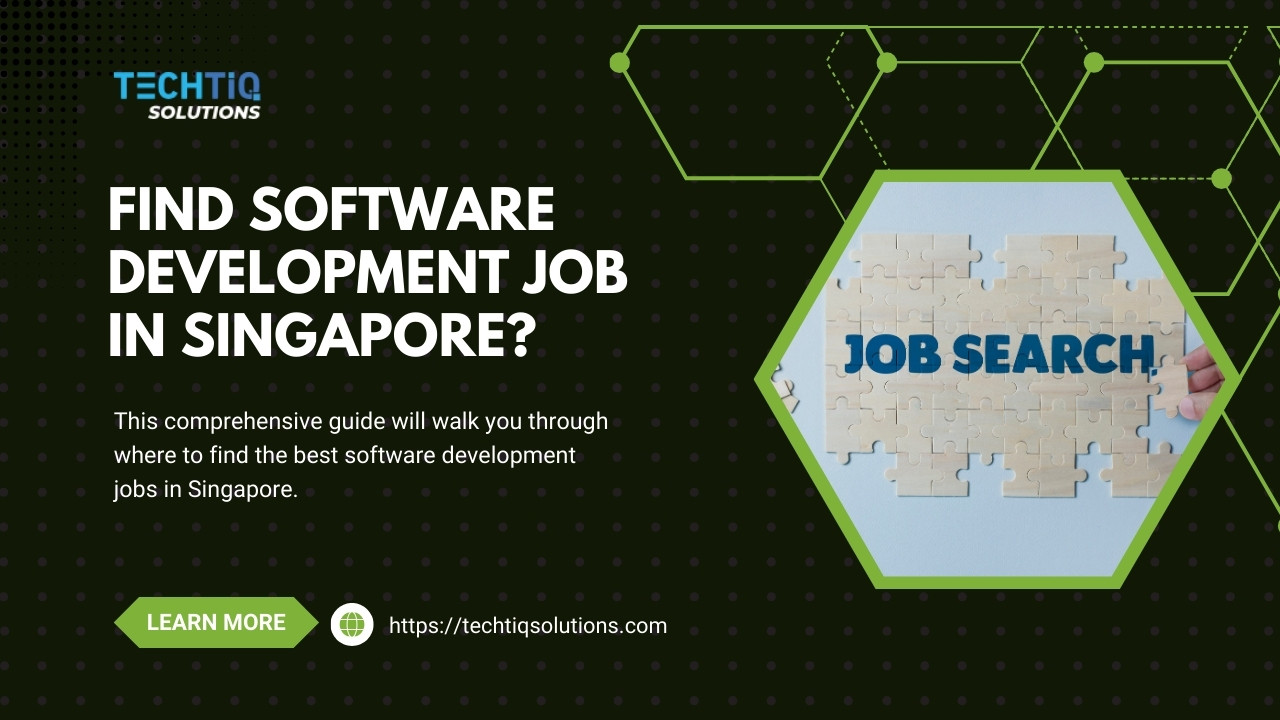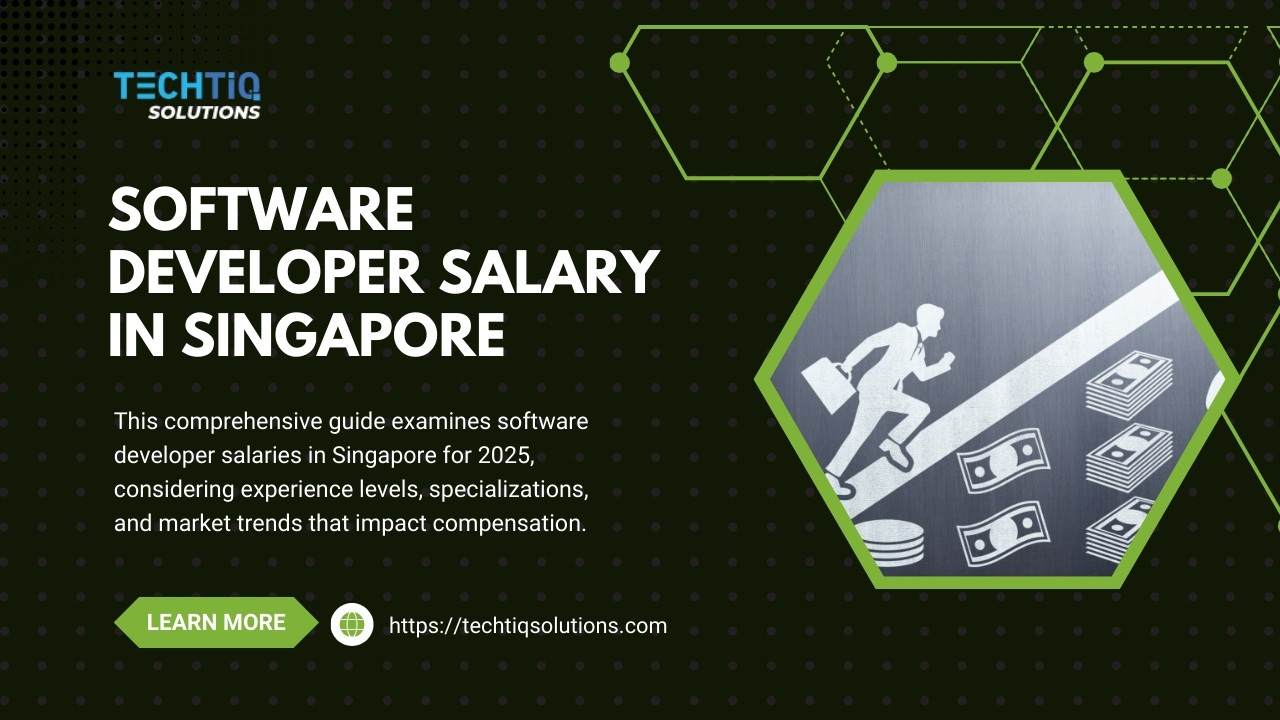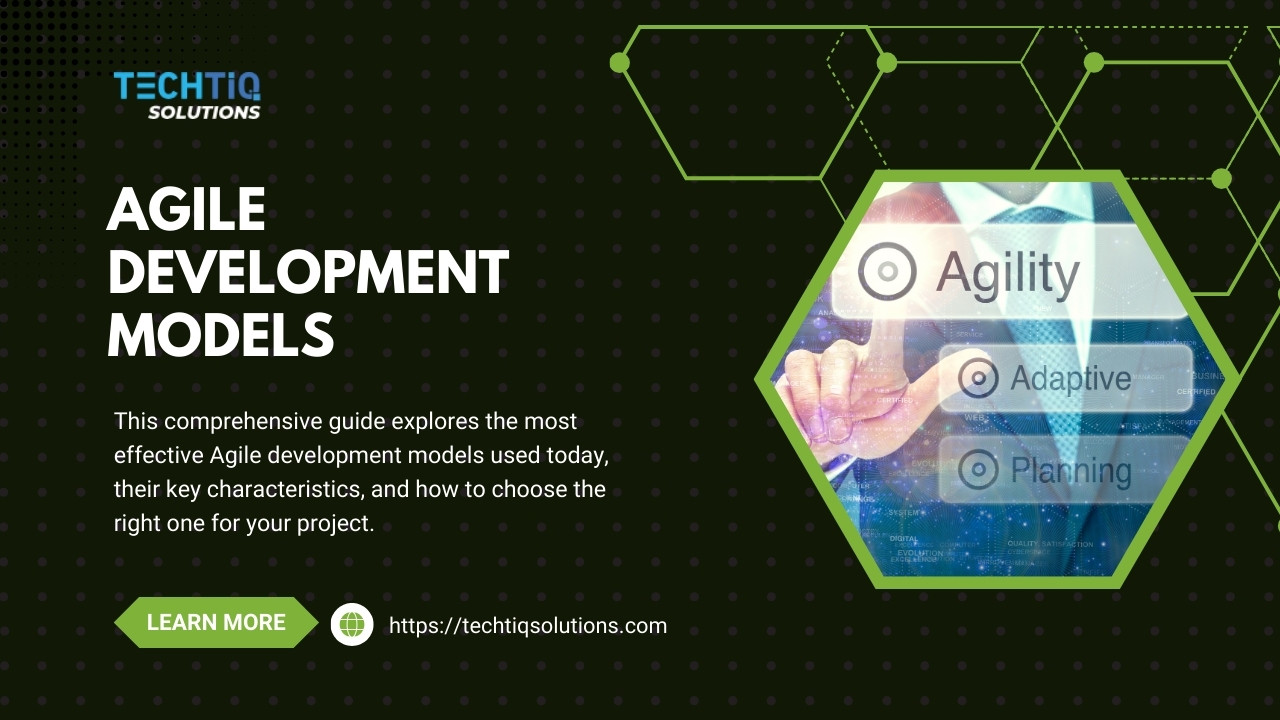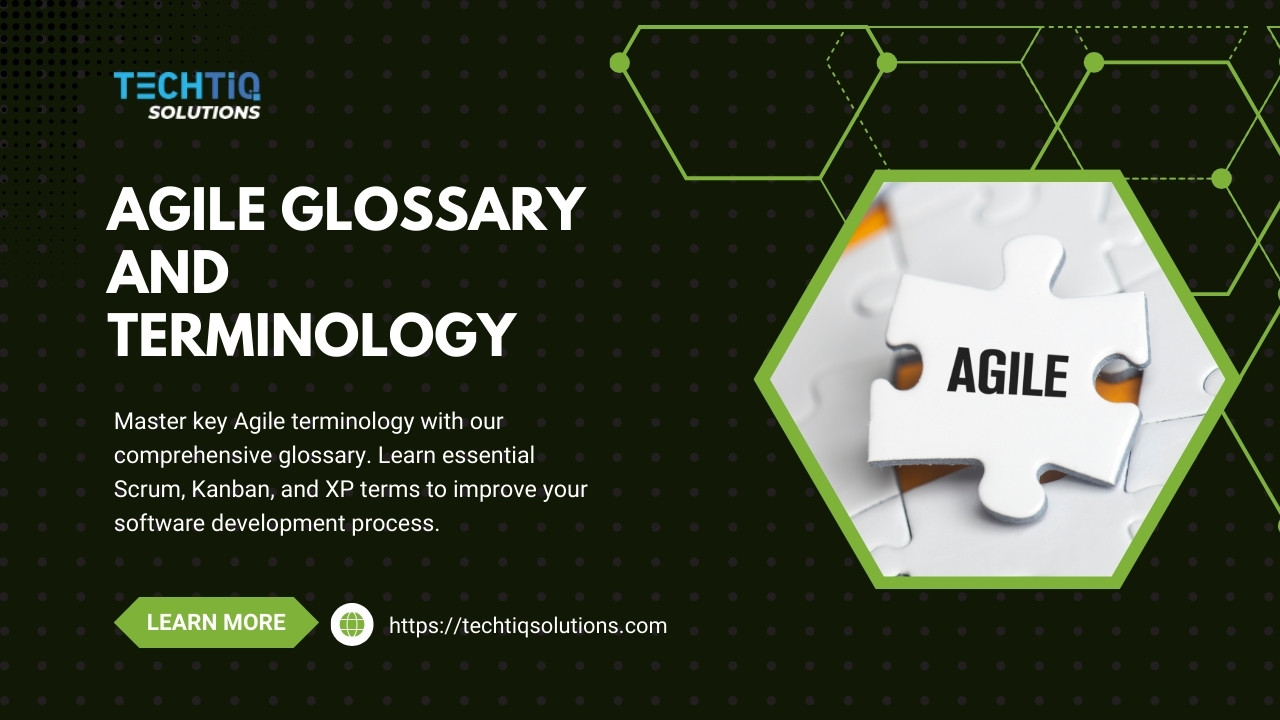How much does custom software development really cost these days? It’s probably the first question on your mind when you’re planning a new software project.
Custom software development pricing in 2025 ranges from $10,000 for simple applications to over $400,000 for enterprise-grade solutions. The global custom software development market is projected to reach $146.18 billion by 2030, making understanding pricing more crucial than ever for businesses planning digital transformation.
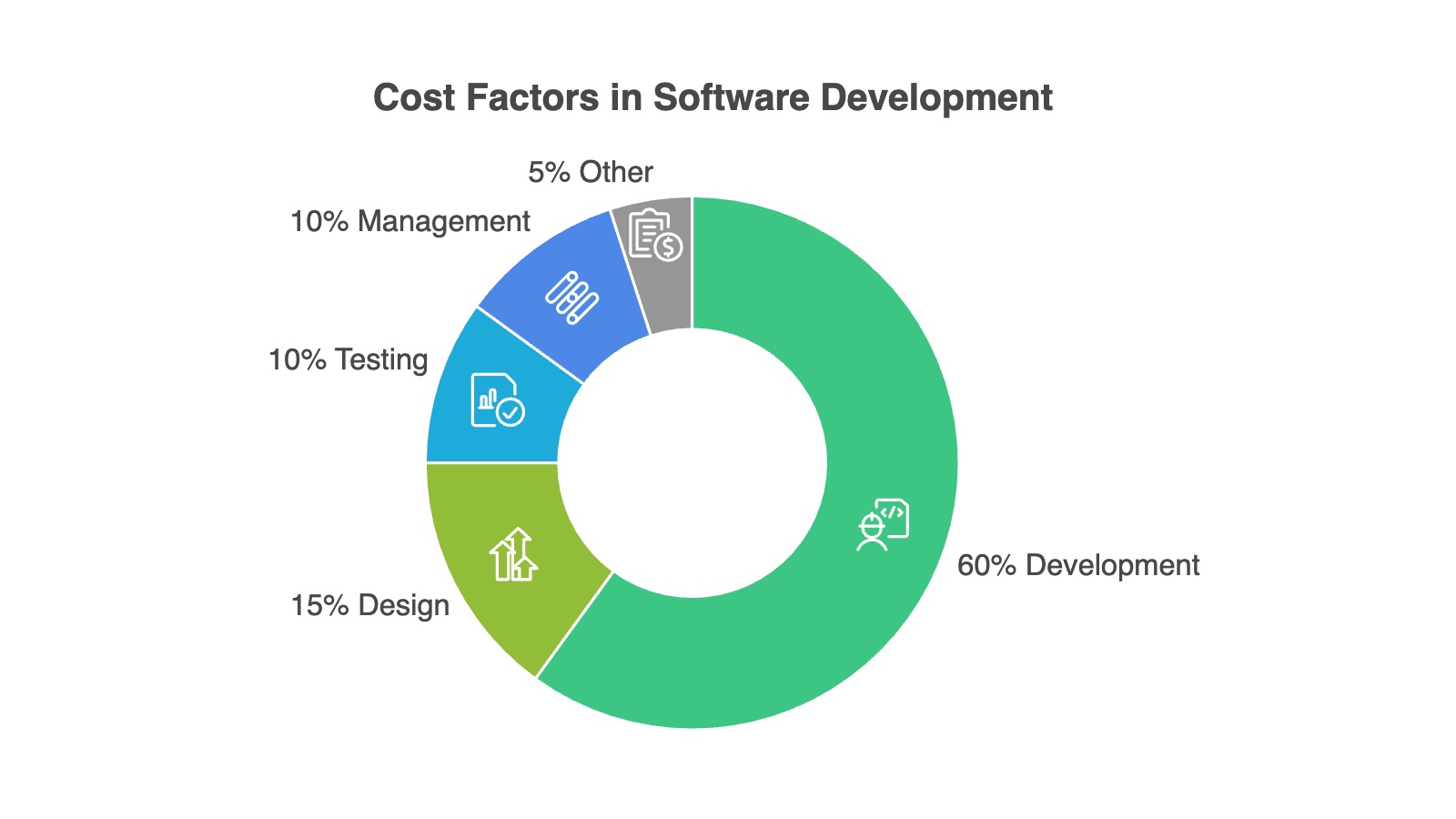
Key Takeaways
- A wide pricing spectrum exists – Projects range from $10,000 to $400,000+, depending on complexity and scope
- Multiple pricing models available – Fixed price, time & materials, dedicated team, and hybrid approaches each suit different project types
- Location significantly impacts cost – Development rates vary from $25/hour in offshore markets to $400+/hour for enterprise firms
- Hidden costs often overlooked – Maintenance, security, compliance, and ongoing support can add 40% to the total project cost
- Project complexity drives pricing – Features, integrations, compliance requirements, and scalability needs determine final investment
Understanding Software Development Cost Ranges
Custom software development pricing breakdown showing simple apps cost $10,000-$75,000 taking 2 months, medium projects range $75,000-$250,000 over 5 months, complex enterprise solutions cost $250,000-$400,000 requiring 9 months, while large-scale systems with AI and multiple integrations range $400,000-$1,000,000 over 12 months development timeline.
Custom software development pricing has evolved significantly in 2025, with businesses facing more options and considerations than ever before. The software development market continues expanding rapidly, with application development expected to generate over $195 billion in 2025 according to industry forecasts.
Understanding cost ranges helps set realistic expectations for your project budget. However, these ranges represent starting points rather than definitive prices, as numerous factors influence final project costs.
Project Size Categories and Typical Costs
Small-Scale Projects ($10,000 – $75,000)
Small projects typically include basic mobile apps, simple web applications, or minimum viable products (MVPs) with limited functionality. These projects usually feature 10-25 screens, basic user authentication, simple data management, and standard integrations.
Medium-Scale Projects ($75,000 – $250,000)
Medium-scale projects encompass more complex applications with advanced features, multiple user roles, third-party integrations, and cross-platform compatibility. These solutions typically include 25-40 screens, complex business logic, payment processing, and moderate customization requirements.
Large-Scale Enterprise Projects ($250,000 – $400,000+)
Enterprise-grade applications involve extensive functionality, complex integrations, high-security requirements, scalability considerations, and compliance needs. These projects feature 40+ screens, sophisticated workflows, advanced analytics, and enterprise-level security measures.
Hourly Rate Variations by Development Approach
Software development hourly rates vary dramatically based on the development approach and team structure you choose. Understanding these variations helps make informed decisions about resource allocation and project budgeting.
Enterprise Development Firms
Top-tier enterprise development companies charge $400+ per hour, with some premium firms exceeding $900 per hour. These organizations provide comprehensive project management, specialized expertise, and enterprise-grade security and compliance capabilities.
Mid-Market Development Companies
Mid-market firms typically charge $120-$250 per hour, offering balanced expertise and cost-effectiveness. These companies often provide dedicated project management, experienced development teams, and proven methodologies while maintaining competitive pricing.
Offshore and Nearshore Development
Offshore development teams charge $27-$82 per hour, depending on location and expertise level. Popular offshore destinations include India, Eastern Europe, and Southeast Asia, while nearshore options in Latin America offer cultural alignment with North American clients.
Key Factors That Determine Pricing
Custom software development pricing depends on multiple interconnected factors that collectively determine the final project investment. Understanding these factors helps create accurate budget projections and make informed decisions about project scope and resource allocation.
48% of software projects exceed their initial budget estimates, highlighting the importance of comprehensive cost analysis during planning phases. Identifying all cost drivers early prevents budget overruns and project delays.
Project Complexity and Scope
Feature Requirements and Functionality
The number and sophistication of features directly impact development time and costs. Basic CRUD (Create, Read, Update, Delete) operations require minimal development effort, while advanced features like real-time collaboration, AI integration, or complex analytics require specialized expertise and extended development periods.
Integration Requirements
Software rarely operates in isolation, requiring integrations with existing systems, third-party services, or APIs. Simple integrations with popular services like payment processors or email providers add minimal complexity, while custom integrations with legacy systems or proprietary databases significantly increase development effort.
User Interface and Experience Design
Custom UI/UX design requirements impact both timeline and costs. Standard interface elements using pre-built components minimize design costs, while completely custom interfaces requiring extensive user research, prototyping, and iteration increase project investment substantially.
Technology Stack and Architecture Decisions
Frontend Technology Choices
Modern frontend frameworks like React, Angular, or Vue.js offer different development speeds and maintenance requirements. React Native or Flutter enable cross-platform mobile development, potentially reducing costs compared to separate native iOS and Android applications.
Backend Infrastructure Requirements
Backend complexity varies from simple REST APIs to sophisticated microservices architectures. Cloud-native applications designed for scalability require different architectural approaches than traditional monolithic applications, impacting both initial development and ongoing operational costs.
Database and Storage Considerations
Database choices affect both development complexity and operational costs. Simple applications may use lightweight databases like SQLite, while enterprise applications require robust database solutions with backup, scaling, and security features.
Development Team Structure and Location
Team Composition Requirements
Different projects require varying team compositions. Simple applications may need only a few developers, while complex enterprise solutions require full teams, including architects, specialized developers, DevOps engineers, security specialists, and quality assurance professionals.
Geographic Location Impact
The location of the development team significantly affects hourly rates and overall project costs. North American developers command premium rates ($65-$130/hour), while skilled developers in Eastern Europe ($30-$70/hour) or Asia ($20-$45/hour) offer cost advantages without necessarily compromising quality.
Communication and Management Overhead
Working with distributed teams requires additional project management and communication overhead. Time zone differences, language barriers, and cultural considerations can impact project timeline and budget, particularly for complex projects requiring frequent collaboration.
Pricing Models Explained
Software development companies use various pricing models to structure client relationships and manage project risks. Each model offers distinct advantages and challenges, making the choice between them crucial for project success and budget management.
Understanding pricing models helps align expectations between clients and development teams while providing frameworks for managing scope changes and project evolution. The right pricing model depends on project characteristics, risk tolerance, and management preferences.
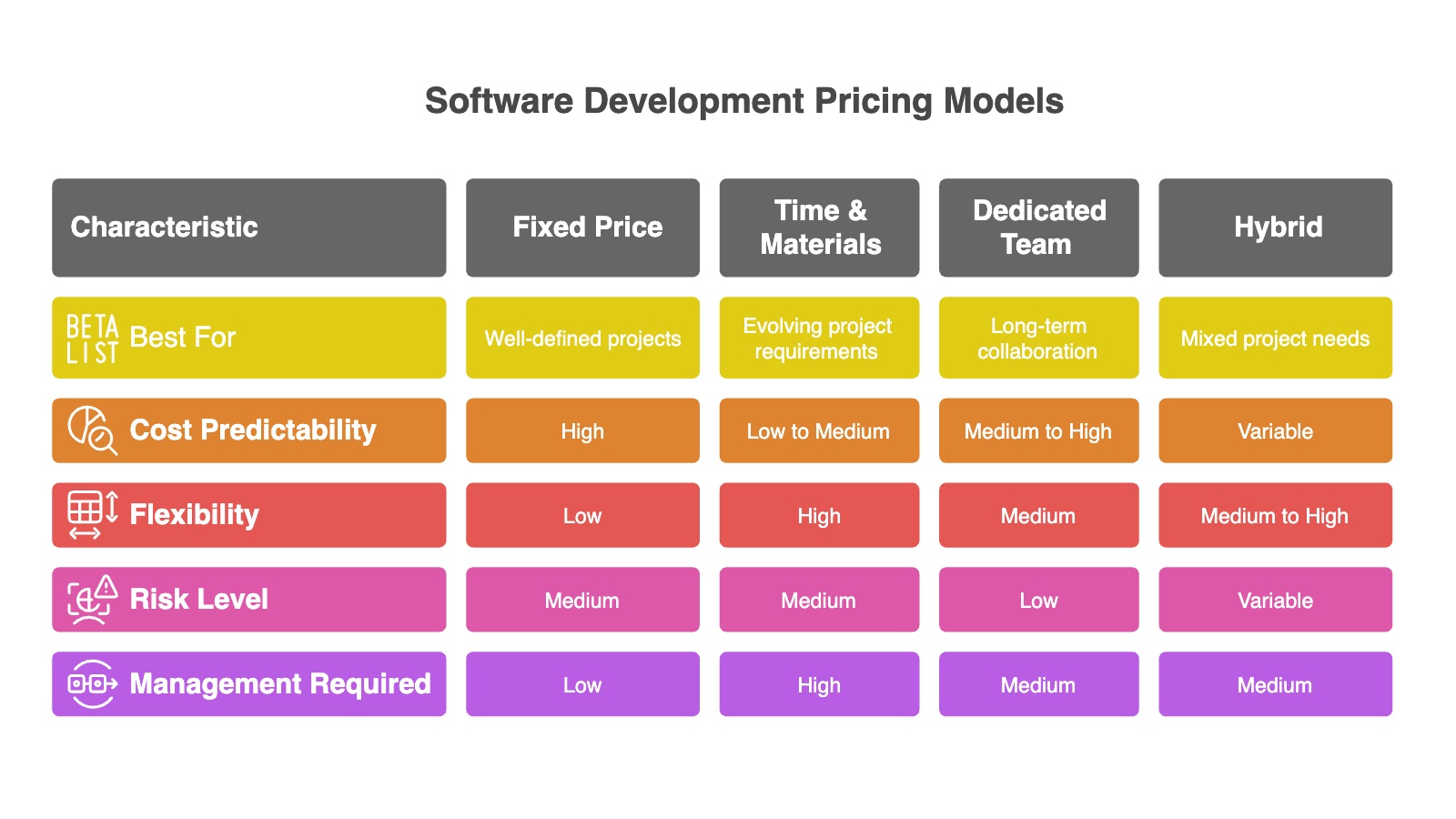
Fixed Price Model
When Fixed Price Works Best
Fixed price contracts work well for projects with clearly defined requirements, stable scope, and predictable timelines. Small to medium-scale projects with comprehensive documentation, established technical approaches, and minimal expected changes benefit most from this pricing structure.
Advantages and Limitations
Fixed price models provide budget certainty and clear project boundaries, making financial planning straightforward. However, scope inflexibility can lead to additional costs if requirements change, and development teams often add a 20-50% premium to absorb project risks.
Risk Considerations
Fixed price projects shift technical and scope risks to the development team, potentially leading to rushed development or corner-cutting to maintain profitability. Changes to project requirements typically require separate negotiations and additional contracts.
Time and Materials Model
Flexible Development Approach
Time and materials (T&M) pricing charges for actual development time and resources used. This model provides maximum flexibility for evolving requirements, iterative development approaches, and projects where the final scope cannot be predetermined accurately.
Transparency and Control
T&M contracts offer complete cost transparency, showing exactly where development effort is invested. Clients maintain direct control over feature prioritization, scope adjustments, and development direction throughout the project lifecycle.
Management Requirements
This model requires active client involvement in project management and scope control. Without proper oversight, costs can escalate beyond budgets, making project management capabilities crucial for successful T&M engagements.
Dedicated Team Model
Long-Term Partnership Approach
Dedicated team pricing involves hiring a complete development team that works exclusively on client projects. This model suits organizations needing ongoing development capacity, multiple concurrent projects, or long-term product development initiatives.
Scaling and Flexibility
Dedicated teams can scale up or down based on project needs while maintaining continuity and institutional knowledge. Team members develop deep understanding of business requirements, technical architecture, and project history over time.
Cost Structure and Management
Dedicated team pricing typically involves monthly rates covering team salaries, overhead, and management costs. This model requires long-term commitments but often provides better cost predictability than hourly T&M arrangements.
Hidden Costs and Budget Considerations
Many organizations focus exclusively on initial development costs while overlooking significant expenses that emerge during and after project completion. These hidden costs can add 40% or more to total project investment, making comprehensive budget planning essential for successful software initiatives.
Understanding the full cost lifecycle helps create realistic budgets and avoid financial surprises that could jeopardize project success. Smart budget planning accounts for both obvious and subtle cost factors that impact long-term project viability.
Development Phase Hidden Costs
Quality Assurance and Testing
Comprehensive testing requires dedicated QA resources, testing environments, an automated testing setup, and multiple testing iterations. Enterprise applications requiring security testing, performance testing, and compliance validation need specialized testing expertise that adds substantial costs.
Project Management and Communication
Effective project management requires dedicated resources for planning, coordination, stakeholder communication, and risk management. Complex projects with multiple stakeholders need experienced project managers whose costs often represent 10-15% of total project budgets.
Documentation and Knowledge Transfer
Creating comprehensive documentation, user manuals, technical specifications, and conducting knowledge transfer sessions requires significant time investment. These activities ensure long-term project maintainability but often get overlooked in initial cost estimates.
Post-Launch Operational Costs
Hosting and Infrastructure
Cloud hosting costs vary based on application usage, data storage requirements, and performance needs. Simple applications might cost $50-200 monthly, while high-traffic enterprise applications can require thousands of dollars in monthly infrastructure costs.
Maintenance and Updates
Ongoing maintenance typically costs 15-25% of initial development investment annually. This includes bug fixes, security updates, performance optimization, and minor feature enhancements needed to keep applications current and secure.
Security and Compliance
Security requirements add both initial development costs and ongoing operational expenses. Applications handling sensitive data need security audits, compliance certifications, regular security updates, and monitoring systems that represent significant ongoing investments.
Scaling and Evolution Costs
Performance Optimization
As applications grow in usage and data volume, performance optimization becomes necessary. Database optimization, caching implementation, load balancing, and infrastructure scaling require additional development investment to maintain high-quality user experience.
Feature Expansion and Updates
Successful applications inevitably require new features, integrations, and capabilities. Planning for future development helps budget for application evolution while maintaining technical debt at manageable levels.
Technology Migration and Updates
Technology stacks evolve rapidly, requiring periodic updates to maintain security, performance, and compatibility. Framework updates, database migrations, and infrastructure modernization represent significant but necessary investments in application longevity.
Regional Cost Variations
Software development costs vary dramatically across different regions due to factors including local salary levels, cost of living, talent availability, and market demand. Understanding regional variations helps make informed decisions about development team location and budget allocation.
Global software development teams offer access to diverse talent pools and cost structures while presenting unique management and communication challenges. The key lies in balancing cost savings with quality requirements and project management complexity.
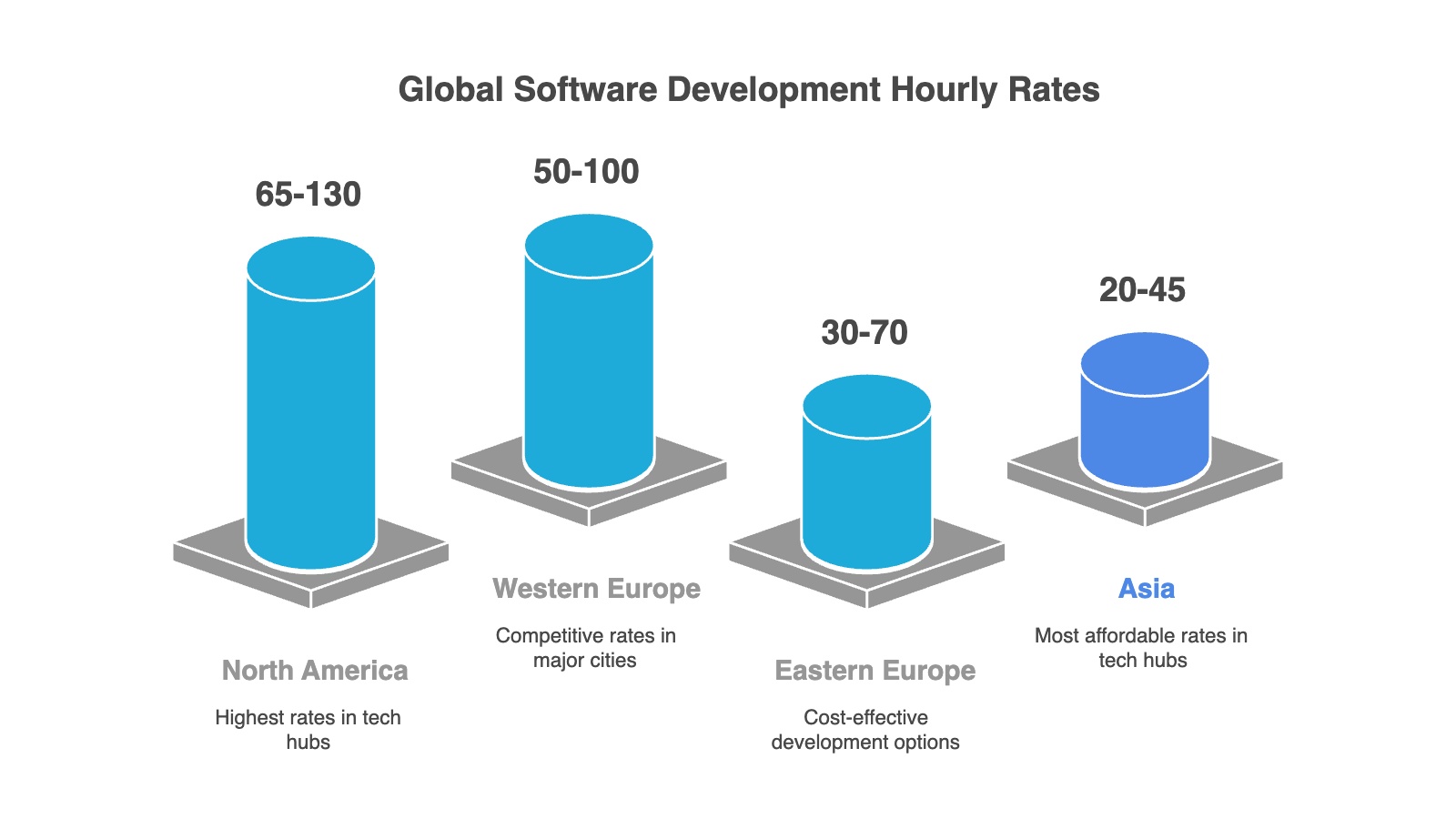
North American Development Costs
United States Market Rates
US-based software developers command premium rates ranging from $65 to $130 per hour for senior developers. Major tech hubs like San Francisco, New York, and Seattle typically exceed these ranges, while smaller markets offer somewhat lower rates.
Canadian Development Market
Canadian developers offer competitive rates, often 10-20% below US equivalents, while providing cultural alignment and minimal time zone differences for North American clients. Major cities like Toronto, Vancouver, and Montreal have established technology ecosystems.
Advantages and Considerations
North American teams provide cultural alignment, language compatibility, intellectual property protection, and simplified legal frameworks. However, premium rates make these teams most suitable for complex projects requiring close collaboration or specialized expertise.
European Development Landscape
Eastern European Markets
Countries like Poland, Ukraine, and Romania offer excellent development talent at competitive rates ($30-$70 per hour). These regions combine strong technical education systems with cost advantages and reasonable time zone overlap with Western Europe and North America.
Western European Options
Germany, the Netherlands, and Scandinavian countries provide premium development services at rates comparable to North America. These markets excel in enterprise software, fintech, and regulated industry applications requiring sophisticated compliance capabilities.
EU Regulatory Advantages
European teams offer advantages for applications requiring GDPR compliance, data sovereignty, or European market access. Established legal frameworks and intellectual property protections provide security for sensitive development projects.
Asian and Offshore Markets
Indian Development Ecosystem
India remains the largest offshore development market, offering rates as low as $25 per hour while providing access to massive talent pools and established development processes. Major cities like Bangalore, Hyderabad, and Pune host numerous established development companies.
Southeast Asian Emerging Markets
Countries like Vietnam, the Philippines, and Thailand provide cost advantages with improved technical capabilities. These markets often offer better time zone alignment for Australian and Pacific region clients.
Quality and Management Considerations
Offshore development requires robust project management, clear communication protocols, and cultural awareness. Success depends on choosing experienced teams with proven track records and establishing effective collaboration frameworks.
TechTIQ Solutions Case Study Spotlight
“TechTIQ’s transparent pricing approach and comprehensive project planning helped us understand exactly what we were investing in. Their detailed cost breakdown eliminated surprises and enabled accurate budget planning for our enterprise software project.”
Enterprise-Level Development: Mobile Team Manager
A leading Australian field service management company needed comprehensive software to coordinate supervisors, operators, equipment, and paperwork across distributed field operations. The existing manual processes created inefficiencies and limited the company’s ability to scale operations effectively.
Project Scope and Complexity
The Mobile Team Manager project involved building a complete cloud-based application with multiple interconnected components. Requirements included real-time scheduling with drag-and-drop capabilities, interactive PDF creation for mobile completion, GPS fleet tracking integrations, electronic timesheets and dockets, and offline mobile app functionality for rural operations.
TechTIQ’s Pricing Approach
Our team provided transparent cost breakdowns covering all project phases from planning through deployment and ongoing support. The pricing structure included dedicated team resources, technology infrastructure, third-party integrations, testing and quality assurance, and post-launch support and maintenance.
Technology Stack and Cost Implications
The project utilized SQL Server 2012, React Native for cross-platform development, ASP.NET API 2.2, SignalR for real-time updates, Angular 5 for web interfaces, and comprehensive testing automation. Multiple tenancy architecture enabled SaaS deployment while maintaining data security and isolation.
Results and Value Delivery
The solution transformed field operations management by enabling real-time coordination, reducing paperwork processing time, improving asset utilization tracking, and enhancing customer service delivery. The investment delivered measurable ROI through operational efficiency gains and enabled business expansion into new markets.
Choosing the Right Pricing Model for Your Project
Selecting the appropriate pricing model directly impacts project success, budget management, and stakeholder satisfaction. The choice depends on project characteristics, organizational preferences, risk tolerance, and management capabilities.
No single pricing model suits all situations, making careful evaluation of project requirements and organizational constraints essential. The right choice aligns project structure with business objectives while managing risks appropriately.
Project Assessment Framework
Requirement Clarity and Stability
Projects with well-defined, stable requirements suit fixed-price models, while evolving or exploratory projects benefit from time and materials approaches. Consider how likely requirements are to change and whether comprehensive specifications can be created upfront.
Budget Constraints and Flexibility
Organizations with strict budget limitations might prefer fixed-price contracts for predictability, while those prioritizing quality and flexibility often choose time and materials models. Evaluate whether budget certainty or development flexibility takes priority.
Timeline, Pressure, and Scope
Projects with aggressive timelines may require dedicated team models to ensure resource availability, while smaller projects might work well with part-time or shared resources under hourly arrangements.
Risk Management Considerations
Technical Risk Assessment
Projects involving new technologies, complex integrations, or unproven approaches carry higher technical risks that make fixed-price contracts problematic. Time and materials models better accommodate technical uncertainty and learning curves.
Scope Change Probability
Consider how likely the project scope is to evolve based on user feedback, market conditions, or technical discoveries. Projects with high scope change probability benefit from flexible pricing models that accommodate iteration.
Client Involvement Capacity
Time and materials models require active client involvement in project management and decision-making. Organizations lacking bandwidth for intensive project oversight might prefer fixed-price arrangements with dedicated project management.
Success Factors and Best Practices
Clear Communication Protocols
Regardless of the pricing model chosen, establish clear communication expectations, regular progress reporting, scope change management processes, and escalation procedures for issue resolution.
Performance Metrics and Accountability
Define success metrics, quality standards, delivery milestones, and accountability measures appropriate for the chosen pricing model. Align incentives between the client and the development team for optimal outcomes.
Contract Terms and Protection
Ensure contracts include intellectual property provisions, confidentiality agreements, performance guarantees, and dispute resolution mechanisms. Consider legal and regulatory requirements specific to your industry and jurisdiction.
Ready to Plan Your Custom Software Development Project?
Understanding custom software development pricing empowers you to make informed decisions about your technology investments. Whether you’re planning a simple mobile app or a complex enterprise solution, having realistic cost expectations sets the foundation for project success.
At TechTIQ Solutions, we’ve helped organizations across multiple industries navigate software development investments through transparent pricing and comprehensive project planning. Our 8+ years of experience delivering 800+ successful projects have taught us the importance of honest, upfront cost discussions that eliminate surprises and enable accurate budgeting.
Our custom software development services include comprehensive solutions across the full project lifecycle:
- Detailed Project Analysis – We thoroughly assess requirements, technical challenges, and scope to provide accurate cost estimates
- Flexible Pricing Models – Whether you prefer fixed-price certainty or time-and-materials flexibility, we structure agreements to match your needs
- Enterprise Software Development – Complex business applications with advanced integrations, security, and scalability requirements
- Mobile App Development – Native iOS, Android, and cross-platform solutions optimized for performance and user experience
- Web Application Development – Modern, responsive web applications built with cutting-edge frameworks and technologies
- Digital Transformation Services – Comprehensive modernization of legacy systems and business processes
Based in Singapore with development teams across Asia, TechTIQ Solutions combines strategic project management with cost-effective development resources. Our transparent approach ensures you understand exactly what you’re investing in, while our proven methodologies deliver results on time and within budget.
Whether you’re a startup looking to build your first application or an enterprise planning digital transformation, our experienced team provides the expertise and guidance needed to make smart technology investments.
Contact Information:
- Email: inquiry@techtiqsolutions.com
- Phone: (+65) 8898 2997
- Address: 28 Sin Ming Lane #02-145, Midview City, Singapore 573972
Ready to discuss your custom software development project? Contact TechTIQ Solutions today for a comprehensive consultation and transparent cost estimate tailored to your specific requirements.
